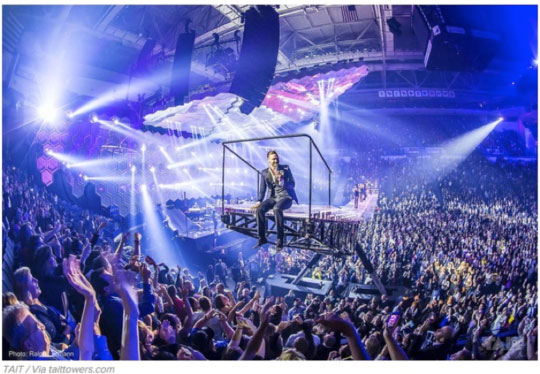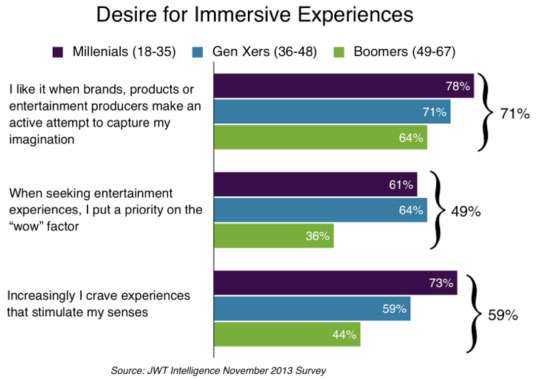
Vol. XIV, No. 2, February-March 2014
- Editor's corner & travelogue
- Why entertainment venues should fear digital technology
- Two Foundations Entertainment Universities on the horizon: one is free and the other has an early bird discount
- Are You Old School?
- Spectator sports growing in popularity & on the decline
- Top design trend - Immersive design
- Back to the basics; the only five ways to grow your business
- Importance of ambiance
- Is bowling in the gutter?
Top design trend - Immersive design
AutoDesk, the company that makes all the sophisticated software for designers, asked some of their friends and leading thinkers throughout the world about what design trends and predictions they have for 2014. One of the top trends identified was Immersive Design - designers in many industries will push the boundaries of what they're making and how the consumer or "spectator" can become part of the experience. Being on the outside looking in will be gone. The prediction is that you will go to the show, the store, the mall or lifestyle center, the architectural space and become part of the experience.

Immersive Experiences was also one the top 10 trends forecast for 2014 by JWT Intelligence, a marketing communications company. Their November 2013 survey of American and British adults found that nearly half said they put a priority on the "wow" factor when seeking entertainment experiences, and close to 6 in 10 said that increasingly they seek experiences that stimulate their senses. Millennials, followed by Gen Xers, are more inclined to make these assertions than Boomers.

This is something for location-based entertainment (LBE) businesses, including FECs, to think very hard about, as it fits in with the trend of every location-based business trying to move from being a place where you buy things or get a service to becoming an experience, a trend first identified 16 years ago by Joe Pine and James Gilmore when they began to write about the experience economy. Real world experiences are no longer limited to entertainment and leisure venues. The experiences that the new competition offers are becoming more immersive and more intense. Also, as our article in this issue discusses, immersive virtual reality experiences will soon be available in the home with Rift googles.
The competition for a share of consumers' enjoyment of experiences in their leisure time is expanding at both location-based businesses as well as at home. Location-based entertainment no longer owns the market.
Vol. XIV, No. 2, February-March 2014
- Editor's corner & travelogue
- Why entertainment venues should fear digital technology
- Two Foundations Entertainment Universities on the horizon: one is free and the other has an early bird discount
- Are You Old School?
- Spectator sports growing in popularity & on the decline
- Top design trend - Immersive design
- Back to the basics; the only five ways to grow your business
- Importance of ambiance
- Is bowling in the gutter?


